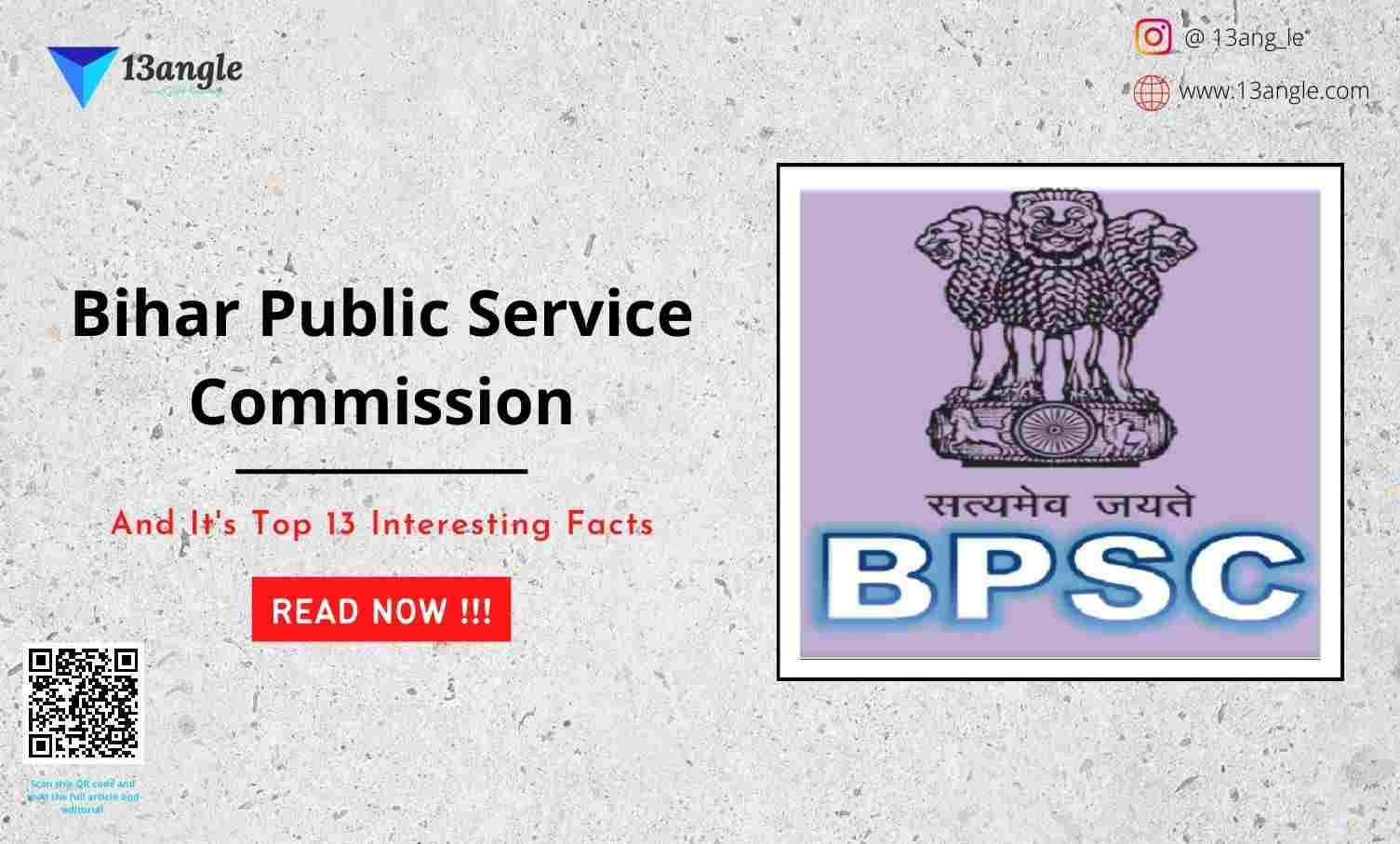
Introduction
Water conflict is a term describing a conflict between countries, states, or groups over the rights to access water resources. A wide range of water disputes appeared throughout history, though traditional wars are rarely waged over water alone. Instead, water has historically been a source of tension and a factor in conflicts that start for other reasons. However, water conflicts arise for several reasons, including territorial disputes, a fight for resources, and strategic advantage.
In India, Inter-state water disputes arise due to conflicts between Indian states who share a single body of water and have disagreements over the sharing of the water and other resources of the river or the other bodies of water. They arise due to unresolved problems of sharing the costs and the benefits of multi-purpose projects on these rivers.
Major Water Disputes In India
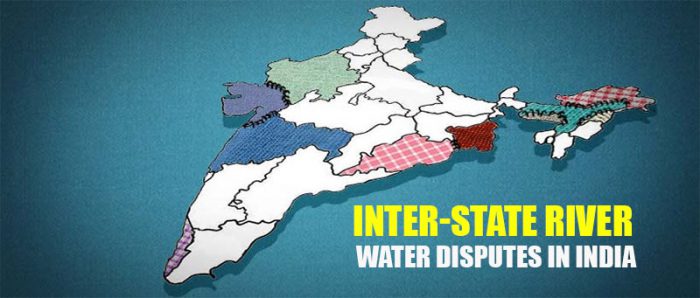
1. Ravi And Beas By Punjab, Haryana And Rajasthan
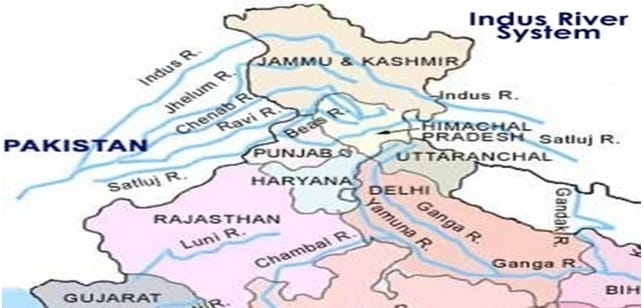
The Ravi and Beas Water Tribunal were established in 1986 to verify the quantum of water usage claimed by Punjab, Haryana, and Rajasthan in relation to their respective shares of remaining waters. In January 1987, the Tribunal forwarded its report.
The tribunal considered several variables such as geographical area, basin area, cultivable area, water requirements, and so on, and divided the waters between Punjab and Haryana in a 1.3:1 ratio. It accepted the Central Government’s assessment of available water in 1981, and only 60% of useable supplies were evaluated for allocation among Punjab and Haryana.
The concerned states and the Central Government approached the tribunal for clarification/guidance on specific matters raised in the report.
The case is currently in court.
2. Narmada By Madhya Pradesh, Gujarat, Maharashtra, Rajasthan
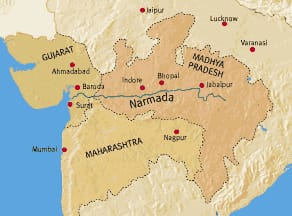
The formation of the Narmada Water Disputes Tribunal was triggered by interstate differences in implementing schemes and sharing of water by the Government of India on 6 October 1969 to adjudicate over the disputes.
The tribunal investigated the matters referred to it and responded after more than 10 years. The Narmada Tribunal aimed to set out conditions regarding the resettlement and rehabilitation of those displaced by the dams.[4] On 12 December 1979, after ten years of investigation, the decision as given by the tribunal, with all the parties at dispute binding to it, was released by the Indian government.
As per the tribunal’s decision, 30 major, 135 medium, and 3000 small dams were granted approval for construction, including raising the height of the Sardar Sarovar dam.
3. Krishna By Maharashtra, Andhra Pradesh, Karnataka, Telangana
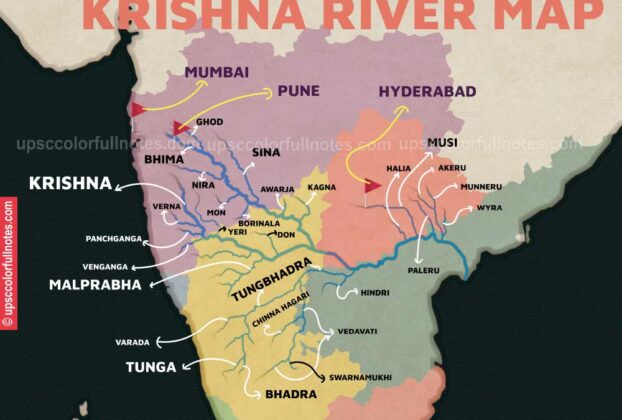
A dispute over the sharing of east-flowing Krishna river water began with the erstwhile Hyderabad and Mysore states and later continued between successors Maharashtra, Karnataka, and Andhra Pradesh.
In 1969, the Krishna Water Disputes Tribunal (KWDT) was set up which presented its report in 1973. The report, which was published in 1976, divided the 2060 TMC (thousand million cubic feet) of Krishna water into three parts: 560 TMC for Maharashtra, 700 TMC for Karnataka, and 800 TMC for Andhra Pradesh.
It was also stipulated that the KWDT order may be reviewed or revised by a competent authority or tribunal any time after May 31, 2000.
The second KWDT was instituted in 2004 which delivered its report in 2010.
It made allocations of the Krishna water at 65 percent dependability and for surplus flows as follows: 81 TMC for Maharashtra, 177 TMC for Karnataka, and 190 TMC for Andhra Pradesh. Andhra Pradesh challenged the report through a Special Leave Petition (SLP) before the Supreme Court in 2011.
After the creation of Telangana from Andhra Pradesh in 2014, the Water Resources Ministry has been extending the duration of the KWDT.
Andhra Pradesh has since asked that Telangana be included as a separate party at the KWDT and that the allocation of Krishna waters is reworked among four states, instead of three.
It is relying on Section 89 of The Andhra Pradesh State Reorganization Act, 2014. Maharashtra and Karnataka are resisting this move arguing that as Telangana was created following bifurcation of Andhra Pradesh, allocation of water should be from Andhra Pradesh’s share which was approved by the tribunal.
4. Vamsadhara By Andhra Pradesh & Odisha

River Vamsadhara is an important east-flowing river between Rushikulya and Godavari, in Odisha and Andhra Pradesh. The river originates at the border of Thuamul Rampur in the Kalahandi district and Kalyansinghpur in the Rayagada district of Odisha.
Andhra Pradesh wants to build the Neradi Bridge across the river which will be possible only after Odisha’s consent.
Odisha argues that the flood flow canal would result in drying up the existing river bed and consequent shifting of the river affecting the groundwater table.
Odisha also raised the issue of scientific assessment of available water in Vamsadhara at Katragada and Gotta Barrage, Andhra Pradesh, and the basis for sharing the available water.
5. Cauvery By Kerala, Karnataka, Tamil Nadu And Puducherry
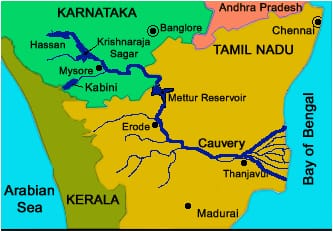
The water stored in the Krishnasagar dam in Karnataka is used for irrigating a number of districts and for meeting the needs of the city of Bangalore. The water stored in Mettur dam in Tamil Nadu is used for crops grown in the delta region of that state.
A conflict arises because both dams are on the same river. The downstream dam in Tamil Nadu can only be filled up if water is released from the upstream one located in Karnataka.
Therefore, both states can’t get as much water as they need for people in their states. This leads to conflict. The central government had to step in and see that a fair distribution is worked out for both states.
The Cauvery Water Disputes Tribunal (CWDT) was constituted by the Government of India in June 1990 to adjudicate the water dispute regarding inter-state river Cauvery and the river valley thereof.
The Tribunal had passed an Interim Order in June 1991 and further Clarificatory Orders on the Interim Order in April 1992 and December 1995. The Cauvery Water Disputes Tribunal has submitted its reports and decision under Section 5 (2) of the Inter-State River Water Disputes Act, 1956 to the Government on 5th February 2007. The party states and the Central Govt. have sought clarification and guidelines under Section 5(3) of the Act.
6. Godavari By Maharashtra, Andhra Pradesh, Karnataka, Madhya Pradesh And Odisha

The government of India (GoI) constituted a common tribunal on 10 April 1969 to solve the river water utilization disputes about the river basin states of Godavari and Krishna rivers under the provisions of the Interstate River Water Disputes Act – 1956.
The common tribunal was headed by Sri RS Bachawat as its chairman with Sri DM Bhandari and Sri DM Sen as its members. Godavari river basin spreads through the states of Telangana (TS), Maharashtra (MR), and Orissa, old Madhya Pradesh {later bifurcated into present Madhya Pradesh (MP) and Chhattisgarh}, Karnataka (K) and Andhra Pradesh (AP).
Krishna river basin states Maharashtra, Karnataka and Andhra Pradesh insisted on the quicker verdict as it had become more expedient for the construction of irrigation projects in the Krishna basin. So the Godavari Water Disputes Tribunal (GWDT) could not proceed till the Krishna Water Disputes Tribunal final verdict was submitted to GoI on 27 May 1976.
7. Mahanadi By Chhattisgarh, Odisha
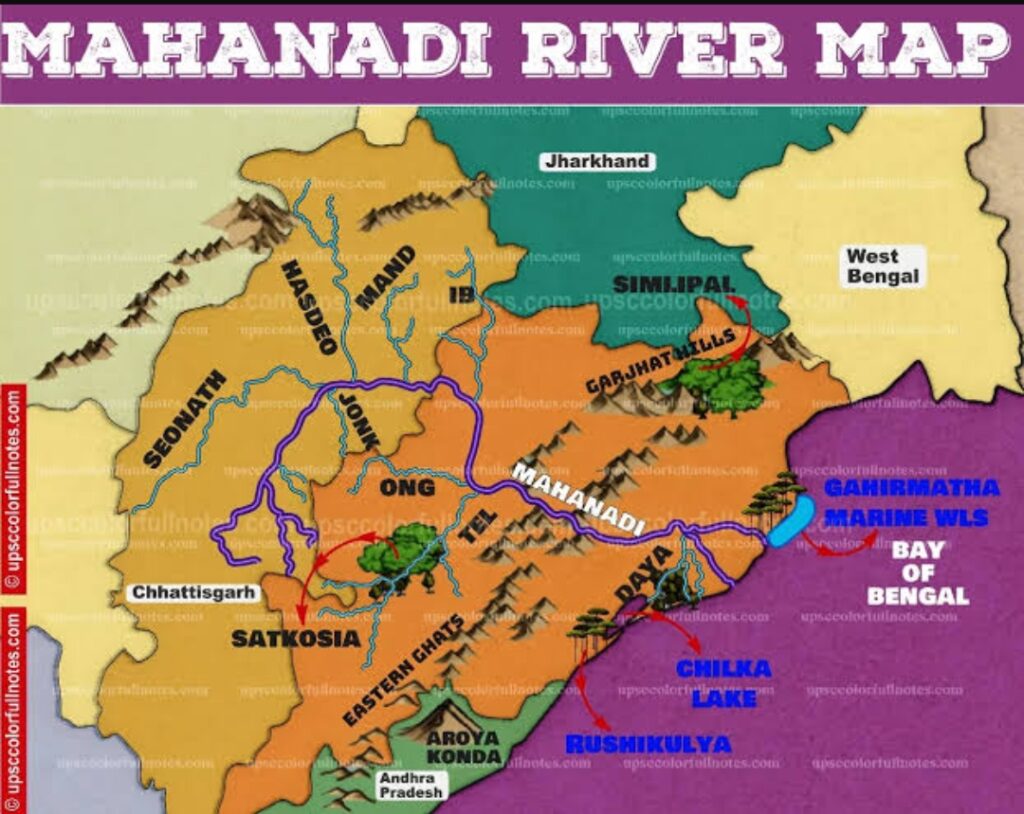
Sharing of Mahanadi river water has been a bone of contention between the states of Odisha and Chhattisgarh. Odisha is now increasingly showing its resentment to the center for not intervening and resolving the water dispute.
Odisha is arguing that Chhattisgarh has been constructing dams and weirs (small dams) upstream of the Mahanadi River. This is being allegedly carried on by the Chhattisgarh government without consulting Odisha.
Odisha says this would affect the flow of the river downstream and affect the drinking water supply. Also, it would impact the irrigation facilities in Odisha and adversely affect the interests of the farmers.
It is also alleged that Chhattisgarh would utilize water far in excess of the equitable share of the waters of Mahanadi. Moreover, the weirs and other projects would impact the flow of water in the Hirakud reservoir, a multipurpose river valley project, which is a lifeline for many in the state.
Under the Inter-State River Water Disputes Act, 1956 a tribunal can be formed to resolve water disputes. A tribunal could be formed if a state government requests the Centre and the Centre is convinced of the need to form the tribunal.
Odisha has long been demanding the formation of a tribunal for resolving the Mahanadi river water dispute. However, notably, only three out of the eight existing tribunals have given awards accepted by the states concerned.
The Centre has recently put forward the idea of a permanent tribunal to adjudicate all inter-state river water disputes for speedy resolution. Materializing this idea could be a solution to the Mahanadi River Water Dispute and many such water disputes among different states.
8. Periyar By Tamil Nadu, Kerala
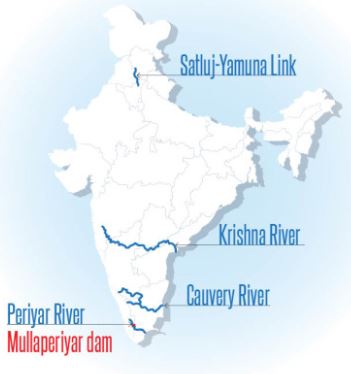
For Tamil Nadu, the Mullaperiyar dam and the diverted Periyar waters act as a lifeline for Theni, Madurai, Sivaganga and Ramnad districts, providing water for irrigation and drinking, and also for the generation of power in Lower Periyar Power Station.
Tamil Nadu has insisted on exercising its unfettered rights to control the dam and its waters, based on the 1886 lease agreement.
Kerala has pointed out the unfairness in the 1886 lease agreement and has challenged its validity.
However, safety concerns posed by the 119-year-old dam to the safety of the people of Kerala in the event of a dam collapse, have been the focus of disputes from 2009 onwards.
Kerala’s proposal for decommissioning the dam and constructing a new one has been challenged by Tamil Nadu.
Idukki district, where the dam is located, is earthquake-prone and has experienced multiple low-intensity quakes. So, the dam is situated in a seismically active zone
A 2009 report by IIT Roorkee stated that the dam “was likely to face damage if an earthquake of the magnitude of 6.5 on the Richter scale struck its vicinity when the water level is at 136 feet”
It poses danger to life and property to people living downstream
Three million people living in the vicinity of the reservoir.
9. Mahadayi By Goa, Maharashtra, Karnataka
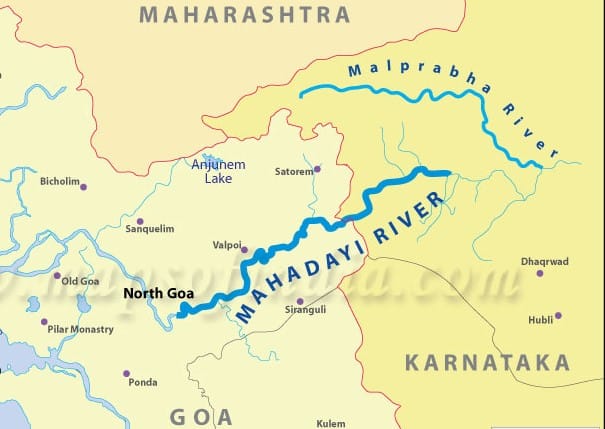
The dispute over the Mahadayi River began in the 80s and grew stronger in the subsequent decades. The trigger was Karnataka’s move to design a number of dams, canals, and barrages to route the Mahadayi river water to the Malaprabha basin. The state claimed that channeling the river water into the basin of Malaprabha, a tributary of the Krishna, would meet the requirements of water-scarce districts of Bagalkot, Gadag, Dharwad, and Belagavi.
Goa, seeking redressal to the dispute in 2002, sought the constitution of a water disputes tribunal. The state also moved the apex court in 2006 with its demand. After sustained efforts by the Goa government, the Mahadayi Water Disputes Tribunal was set up on November 16, 2010.
Active River Water Dispute Tribunals In India
Krishna Water Disputes Tribunal II (2004) – Karnataka, Telangana, Andra Pradesh, Maharashtra
Mahanadi Water Disputes Tribunal (2018) – Odisha &Chattisgarh
Mahadayi Water Disputes Tribunal (2010) – Goa, Karnataka, Maharashtra
Ravi & Beas Water Tribunal (1986) – Punjab, Haryana, Rajasthan
Vansadhara Water Disputes Tribunal (2010) – Andra Pradesh & Odisha.
Constitutional Provisions
River waters use/harnessing is included in states jurisdiction. However, article 262 of the Constitution provides for the adjudication of inter-state water disputes.
Under this, Parliament may by law provide for the adjudication of any dispute or complaint with respect to the use, distribution, and control of waters of any inter-state river and river valley.
The President of India may also establish an interstate council as per Article 263 to inquire and recommend the dispute that has arisen between the states
The Parliament has enacted two laws, the River Boards Act (1956) and the Inter-State Water Disputes Act (1956).
Under this, Parliament may by law provide for the adjudication of any dispute or complaint with respect to the use, distribution, and control of waters of any inter-state river and river valley.
The Inter-State Water Disputes Act empowers the Central government to set up an ad hoc tribunal for the adjudication of a dispute between two or more states in relation to the waters of an inter-state river or river valley.
The award of the tribunal is final and binding on the parties to the dispute.
Neither the Supreme Court nor any other court is to have jurisdiction in respect of any water dispute which may be referred to such a tribunal under this Act.
The Inter-State River Water Disputes (Amendment) Bill, 2019 was introduced in Lok Sabha on July 25, 2019, by the Minister of Jal Shakti, Mr. Gajendra Singh Shekhawat. It amends the Inter-State River Water Disputes Act, 1956. The Act provides for the adjudication of disputes relating to waters of inter-state rivers and river valleys.
Under the Act, a state government may request the central government to refer an inter-state river dispute to a Tribunal for adjudication. If the central government is of the opinion that the dispute cannot be settled through negotiations, it is required to set up a Water Disputes Tribunal for adjudication of the dispute, within a year of receiving such a complaint. The Bill seeks to replace this mechanism.
Conclusion
India has witnessed several river water-sharing disputes in the past. The disputes between upper riparian states and the lower ones are based on conflicting water use demands: these are often attempted to get resolved through the announcement of Water Tribunal awards or litigation in the courts. The solutions to resolve water-sharing disputes, to begin with, should include steps for conserving water in various sectors. There has to be a continuous dialogue among stakeholders on the various aspects of water-sharing. A permanent forum should be constituted for this purpose. The resolution of water-sharing disputes should not be only in the domain of governments. All stakeholders must come forward to discuss and crystalize issues for their effective resolution.
Are there any solutions that go to the core of the ever-increasing water-sharing disputes? The solutions, to begin with, should include steps for conserving water in various sectors. For example, in the domestic sector, leakage of piped water use should be minimized, thus reducing the quantum of non-revenue water. Wastewater should be used as a resource through its recycling and reuse. In the industry sector, water use efficiency should be increased by adopting zero water discharge measures. In the agriculture sector, the use of technology such as micro-irrigation would improve the water use efficiency. There was about a 47% increase of coverage area under micro-irrigation in India during 2016-17 over the previous year, yet its estimate during 2017-18 is only about 12 lakh hectares. There is thus enormous scope for increasing micro-irrigation coverage in the coming years.
Second, groundwater depletion should be arrested through suitable recharging of the water aquifers. Over the past 30 years, India has seen a 13% decline in the water table. There are huge overdrafts of groundwater in some states. For example, in Punjab, more than 100 blocks are overexploited, and the state of groundwater development is unsustainable. Unless this trend is arrested, water quality will continue to reduce, affecting the availability of safe water.
Top 13 Interesting Facts About Water Disputes Between Indian States
Water had already become a contentious issue during the British Raj, as considerable parts of the country were already relatively arid and major Indian rivers were shared by two or more states
Andhra Pradesh has complained to the Krishna River Management Board (KRMB) about the drawing of water from the Srisailam project by Telangana for power generation.
Andhra Pradesh wants to build the Neradi Bridge across the VasundhraRiver which will be possible only after Odisha’s consent.
The Cauvery River has been a source of conflict between the states of Karnataka and Tamil Nadu for over 124 years.
A lease indenture for 999 years was made on 29-10-1886 between Maharaja of Travancore and Secretary of State for India for Periyar irrigation works.
At the heart of the dispute over Mahanadi water lies the huge Hirakud dam and reservoir. Odisha’s allegation of reduced flow to the Hirakud reservoir from Chhattisgarh triggered the dispute.
The Mahadayi river rises in the Western Ghats from Karnataka’s Belagavi district and is Goa’s one of the few sweet-water sources.
With the reorganization of Punjab in November 1966, Punjab and Haryana were carved out as successor states. Thereafter, the present dispute between Punjab and Haryana about Ravi-Beas water started. Four perennial rivers, Ravi, Beas, Sutlej, and the Yamuna, flow through these states.
Narmada River Development project proved even larger than the already ambitious federal government’s proposal, comprising more than 3,000 dam projects, including no less than 165 large projects.
Entry 17 of the State List deals with water i.e. water supply, irrigation, canal, drainage, embankments, and water storage and water power.
Entry 56 of Union List empowers the Union Government for the regulation and development of inter-state rivers and river valleys to the extent declared by Parliament to be expedient in the public interest.
The shift in tribunals’ approach, from deliberative to adversarial, aids extended litigation and politicization of water-sharing disputes.
In order to further streamline the adjudication of inter-State river water disputes, the Inter-State River Water Disputes (Amendment) Bill, 2017 was introduced in Lok Sabha in March 2017 by amending the existing ISRWD Act, 1956.



